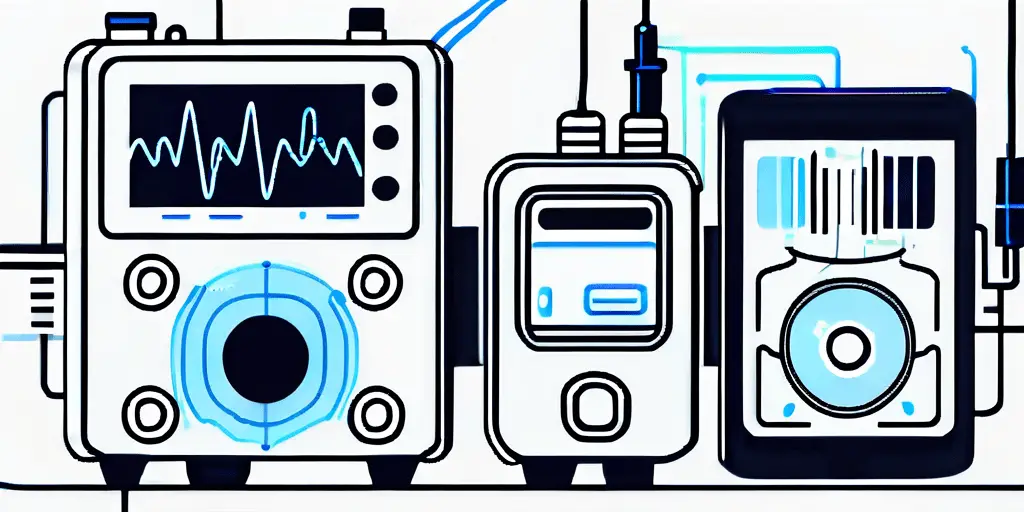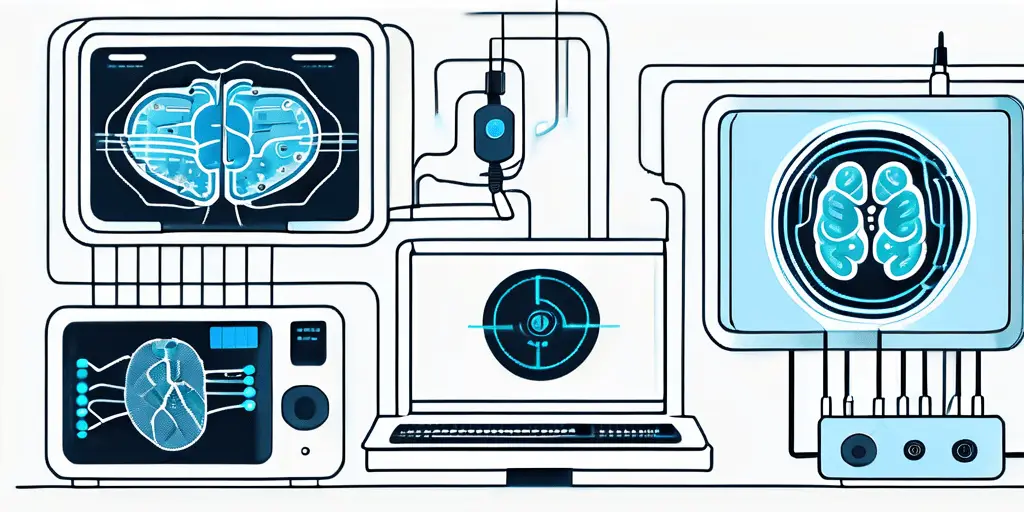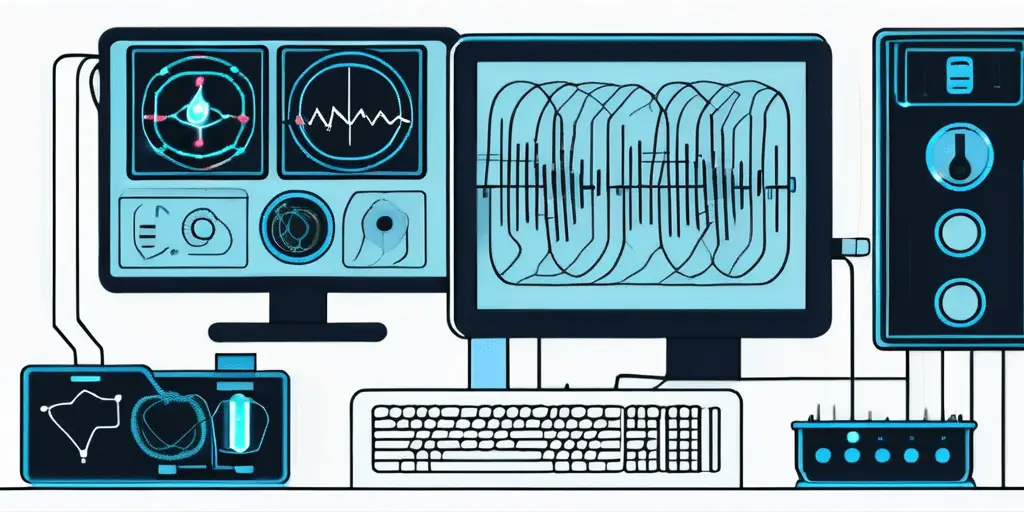From pacemakers to insulin pumps, medical devices have revolutionized how we approach patient care. However, with innovation comes a new set of challenges. One of the most pressing concerns in this digital age is the vulnerability of medical devices to cyber threats. In this article, we will delve into the world of MedRadio vulnerabilities and explore the crucial role cybersecurity plays in safeguarding patient health.
Understanding MedRadio in Healthcare
Before we explore the vulnerabilities, it’s important to understand MedRadio and how it impacts healthcare. MedRadio, also known as Medical Device Radiocommunication Service, is a wireless technology used in various medical devices. It enables device-to-device communication, allowing medical professionals to monitor and control these devices remotely without the need for physical interaction.

Expanding on the significance of MedRadio in healthcare, it’s crucial to note that this technology has revolutionized patient care by providing real-time data transmission and monitoring capabilities. This means that healthcare providers can make informed decisions promptly, leading to improved treatment outcomes and patient safety. Additionally, MedRadio plays a vital role in telemedicine applications, enabling healthcare professionals to deliver care to patients in remote or underserved areas.
The Role of MedRadio in Medical Devices
MedRadio is the backbone for many life-saving devices, such as implantable cardiac devices, neurostimulators, and cochlear implants. It facilitates seamless communication between the device and healthcare providers, enabling timely adjustments and interventions to optimize patient care. This technology has undoubtedly enhanced the quality of healthcare delivery, but it is not without its vulnerabilities.
Delving deeper into MedRadio’s impact on medical devices, it’s worth highlighting that these technologies have significantly improved patient outcomes and quality of life. For instance, implantable cardiac devices equipped with MedRadio capabilities can transmit critical patient heart health data to healthcare providers, allowing for early detection of issues and timely interventions. Similarly, neurostimulators utilizing MedRadio technology can help manage chronic pain conditions more effectively by adjusting stimulation levels remotely based on patient feedback.
The Technological Framework of MedRadio
At its core, MedRadio relies on radiofrequency (RF) waves to transmit data between medical devices and external systems. RF waves operate within specific frequency bands allocated by regulatory bodies such as the Federal Communications Commission (FCC). These frequency bands are shared with other wireless devices, increasing the potential for interference and unauthorized access.
The security of MedRadio communication is a critical consideration in the healthcare industry. Encryption and authentication protocols are implemented to safeguard patient data and prevent unauthorized tampering with medical devices. However, as technology advances and cyber threats evolve, ensuring the robustness of these security measures remains an ongoing challenge for healthcare organizations and device manufacturers.
Identifying Potential Cybersecurity Threats
As the healthcare industry embraces digital transformation, the risk of cyber attacks on medical devices becomes more prominent. These devices could be vulnerable to many threats without adequate cybersecurity measures, compromising patient safety and data integrity.

The need for robust cybersecurity practices cannot be overstated in today’s interconnected world, where medical devices are increasingly integrated with networked systems. Technological evolution has brought numerous benefits in the healthcare sector, such as remote monitoring and real-time data analysis. However, it has also opened up new avenues for cyber threats, making it essential for healthcare providers to stay vigilant and proactive in safeguarding patient information and medical devices.
Common Cybersecurity Vulnerabilities in MedRadio
One of the most common vulnerabilities in MedRadio devices is the lack of encryption. Without encryption, malicious actors can intercept and manipulate the data transmitted between devices. Additionally, insecure wireless protocols and weak authentication mechanisms can leave the door wide open for unauthorized access.
The proliferation of Internet of Things (IoT) devices in healthcare settings has introduced additional complexities in ensuring the security of interconnected systems. The interplay between various devices and networks creates a web of potential vulnerabilities that cyber attackers can exploit. Healthcare organizations must conduct thorough risk assessments and implement layered security measures to mitigate these risks effectively.
The Impact of Cybersecurity Breaches on Healthcare
A cybersecurity breach in the healthcare sector can have far-reaching consequences. Not only can it compromise patient privacy and confidentiality, but it can also disrupt critical healthcare services. Imagine a scenario where a hacker gains control over an insulin pump or adjusts the settings of a cardiac device remotely. The ramifications could be catastrophic, underscoring the urgent need for robust cybersecurity measures.
The reputational damage and legal implications resulting from a cybersecurity breach can have lasting effects on healthcare organizations. Patients rely on healthcare providers to protect their sensitive information and deliver safe, quality care. Any compromise in cybersecurity jeopardizes patient trust and exposes healthcare facilities to regulatory penalties and financial losses. Healthcare professionals must prioritize cybersecurity as an integral part of their operations to ensure the continuity of care and the safeguarding of patient well-being.
MedRadio and Regulatory Compliance
Recognizing the potential risks associated with MedRadio, regulatory bodies have established standards and guidelines to ensure the safety and security of these devices. Compliance with these regulations is essential, but it is not a foolproof solution to cybersecurity.
Ensuring the security and integrity of MedRadio devices is a multifaceted challenge requiring regulatory compliance, technological solutions, and proactive risk management strategies. Organizations must navigate a complex landscape of evolving threats and regulatory requirements to safeguard these critical medical devices.
Current Regulatory Standards for MedRadio
The FDA has set forth guidelines for medical device cybersecurity in the United States. The guidelines emphasize the importance of security controls and risk assessments throughout the device’s lifecycle. Additionally, the FCC regulates the use of wireless spectrum allocated to MedRadio, imposing technical requirements to mitigate interference and unauthorized access.
Compliance with these regulatory standards is crucial for ensuring the safe and effective operation of MedRadio devices. By adhering to these guidelines, manufacturers and healthcare providers can mitigate potential risks and vulnerabilities that could compromise patient safety and data security.
The Gap Between Compliance and Actual Security
While regulatory compliance is a step in the right direction, it does not guarantee comprehensive security. The dynamic nature of cyber threats necessitates a proactive approach to cybersecurity. Compliance standards should be viewed as a baseline, with organizations going above and beyond to implement robust security measures and regular monitoring.
Organizations must adopt a holistic cybersecurity strategy that encompasses regulatory compliance, threat intelligence, incident response planning, and ongoing security assessments. By taking a proactive and comprehensive approach to cybersecurity, stakeholders can better protect MedRadio devices and the sensitive information they handle.
Strategies for Enhancing MedRadio Cybersecurity
In addition to the mentioned strategies, another crucial aspect of enhancing MedRadio cybersecurity is ensuring the devices’ physical security. Implementing measures such as secure storage facilities, restricted access to MedRadio devices, and regular inventory checks can help prevent unauthorized physical access that may compromise the security of the devices.
Best Practices for Securing MedRadio Devices
- Implement strong encryption protocols to protect data transmission.
- Regularly update device firmware with security patches and updates.
- Adopt multi-factor authentication to strengthen access controls.
- Conduct thorough risk assessments to identify vulnerabilities.
- Establish incident response plans to mitigate the impact of breaches.
Healthcare organizations should prioritize employee training and awareness programs to educate staff about cybersecurity best practices and the importance of safeguarding MedRadio devices. Human error remains one of the leading causes of security breaches, making investing in continuous education and training imperative.
Future Trends in MedRadio Cybersecurity
As technology continues to evolve, so too will the cybersecurity landscape. Emerging trends such as machine learning and artificial intelligence hold immense potential in enhancing MedRadio security. These technologies can analyze vast amounts of data to detect anomalies and identify potential threats in real-time.
The integration of blockchain technology in MedRadio cybersecurity is gaining traction. Blockchain’s decentralized and tamper-resistant nature can provide a secure platform for storing and managing sensitive patient data, reducing the risk of data breaches and unauthorized access.
Conclusion: The Future of MedRadio Cybersecurity
As we look ahead, we must balance patient care and cybersecurity. While advancements in medical devices have undoubtedly improved patient outcomes, they also pose inherent risks. Continuous monitoring and improvement will be paramount in safeguarding the integrity of MedRadio devices and ensuring the safety and well-being of patients worldwide.

Balancing Patient Care and Cybersecurity
As healthcare professionals, our primary focus is always on providing the best possible care to our patients. However, it is equally important to recognize the impact of cybersecurity on patient safety. By striking a balance between the two, we can navigate the challenges posed by MedRadio vulnerabilities while delivering exceptional care.
The Role of Continuous Monitoring and Improvement
Cyber threats are not static; they are constantly evolving, requiring healthcare organizations to embrace a culture of continuous monitoring and improvement. By staying vigilant and adapting to emerging threats, we can proactively identify and mitigate vulnerabilities in MedRadio devices, ensuring the longevity and effectiveness of our healthcare systems.
As the healthcare sector continues to integrate advanced medical devices, the importance of robust cybersecurity measures cannot be overstated. With its unparalleled expertise in medical device cybersecurity, Blue Goat Cyber stands ready to fortify your organization against MedRadio vulnerabilities and other cyber threats. Our veteran-owned company is committed to providing tailored B2B services that ensure HIPAA and FDA compliance and rigorous penetration testing to secure your digital infrastructure. Don’t let cyber vulnerabilities compromise your patient care or business continuity. Contact us today for cybersecurity help and partner with Blue Goat Cyber to transform your cybersecurity challenges into a strategic advantage.


